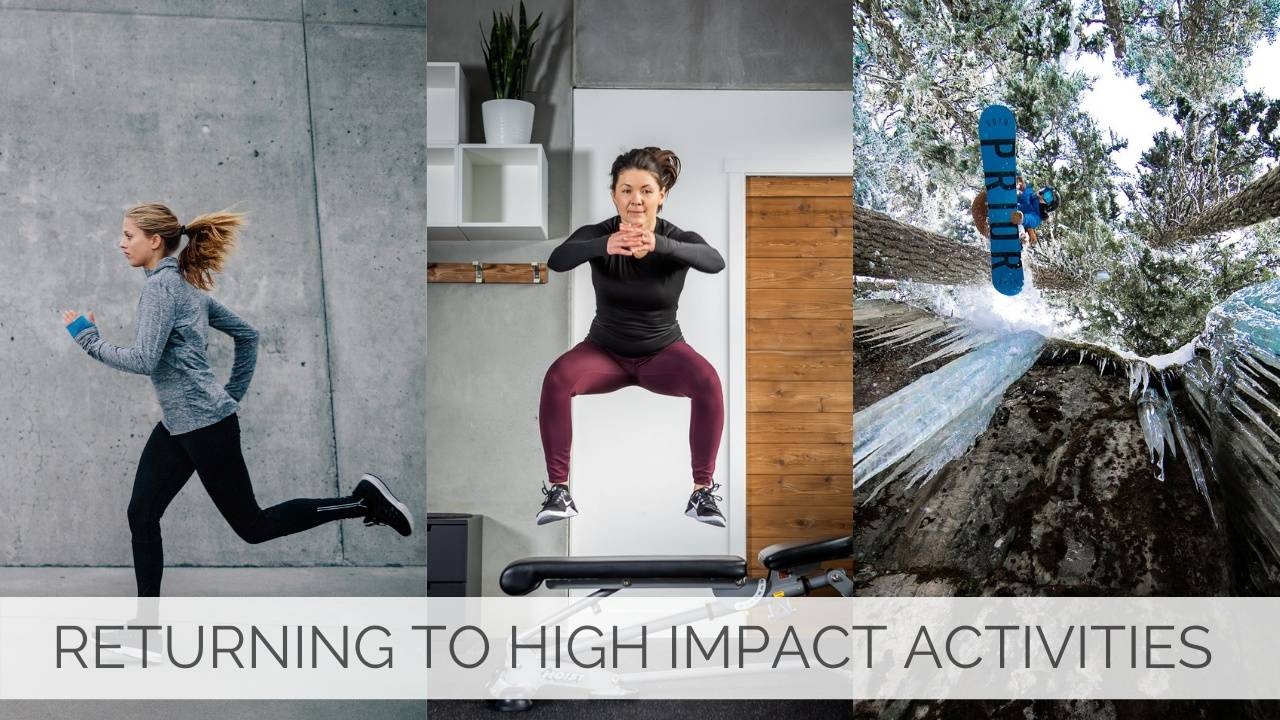Returning to running and high impact activities.
Jan 17, 2021
Running is a high impact sport placing a lot of demand on your body.
Running places 3 x your bodyweight on your pelvic floor, you absolutely want to train the pelvic floor first to manage the load it will experience when running.
The impact is also associated with a sudden rise in intra-abdominal pressure. Your body needs to be able to handle this pressure so that you don't bear down on your pelvic floor and cause dysfunction and or prolapse.
Learning and practising a proper diaphragmatic breath will get your breath and pelvic floor working in synergy. Taking the time to regain or find the connect between your breath, pelvic floor and core is so important. We want that pelvic floor to function reflexively and subconsciously for you. You don't want to be thing about engaging your pelvic floor while running. If you are, you are not ready to run.
Correcting posture and strengthening your full body will optimize your body alignment and its ability to manage in intra-abdominal pressure and the impact forces from running.
To be run ready, your body also needs adequate time to heal and regain its strength, particularly in the abdominal and pelvic floor muscles after having a baby.
Following caesarean section delivery, consideration should also be given to the healing and remodelling of the uterine scar, abdominal fascia has only regained 51%-59% of its original tensile strength by 6-weeks post caesarean section and 73%-93% of its original tensile strength at 6-7 months postnatal.
It is recommended following an initial low impact exercises timeline for the first 3 months followed by return to running between 3-6 months postnatal at the earliest.
High impact exercise was found to have a 4.59 fold increased risk of pelvic floor dysfunction compared to low impact exercise. You need to evaluate your risk vs reward, when thinking about returning to run earlier than 3 months or before you've fully healed and regained your strength.
It is recommended that all women, regardless of how they deliver, seek out a pelvic health assessment with a pelvic floor physiotherapist to evaluate strength, function and co-ordination of the abdominal and pelvic floor muscles which are often impacted by pregnancy and delivery
Risk Factors for returning to running, you are more susceptible to injuries and are at an increased risk for prolapse if you have any of the following
- Less than 3 months postnatal
- Pre-existing hypermobility conditions
- Breastfeeding
- Pre-existing pelvic floor dysfunction or lumbopelvic dysfunction
- Psychological issues which may predispose a postnatal mother to inappropriate intensity and/or duration of running as a coping strategy
- Obesity
- Caesarian Section or perineal scarring
If you have any of the following signs and symptoms prior to, or after attempting, return to running you are not ready to return to high impact activities
- Heaviness/ dragging in the pelvic area (can be associated with prolapse)
- Leaking urine or inability to control bowel movements
- Conning/ doming of abdomen or noticeable gap along the midline of your abdominal wall. (This may indicate Diastasis Rectus Abdominis (DRA))
- Pelvic or lower back pain
- Ongoing or increased blood loss beyond 8 weeks postnatal that is not linked to your monthly cycle
Guidelines
Aim for a return to running between 3-6 months postpartum providing you have passed the criteria listed below.The ability complete these movements successfully (with no pain, incontinence, pelvic heaviness/dragging) gives an idea of how the body is managing load in tasks that mimic the requirements of running.
Pelvic floor contractions:
- ✓ 10x fast reps
- ✓ 8-12 reps of 6-8 second maximum voluntary contraction
- ✓ 60 seconds submaximal 30-50% contraction
Achieve the following without pain, heaviness, dragging or incontinence:
- ⁃ Walking 30 minutes
- ⁃ Single leg balance 10 seconds
- ⁃ Single leg squat 10 repetitions to knee height with no bench
- ⁃ Jog on the spot 1 minute
- ⁃ Forward bounds 10 repetitions
- ⁃ Hop in place 10 repetitions each leg
- ⁃ Single leg ‘running man’: opposite arm and hip flexion/extension (bent knee) 10 repetitions each side
20x repetitions of each:
- Single leg calf raise
- Single leg bridge
- Single leg sit to stand
- Side lying abduction
Information taken from "Return to Running Postnatal Guidelines" by Emma Brockwell, Grainne Donnelly and Tom Groom.

Lorem ipsum dolor sit amet, consectetur adipiscing elit. Cras sed sapien quam. Sed dapibus est id enim facilisis, at posuere turpis adipiscing. Quisque sit amet dui dui.
Stay connected with news and updates!
Join our mailing list to receive the latest news and updates from our team.
Don't worry, your information will not be shared.
We hate SPAM. We will never sell your information, for any reason.

